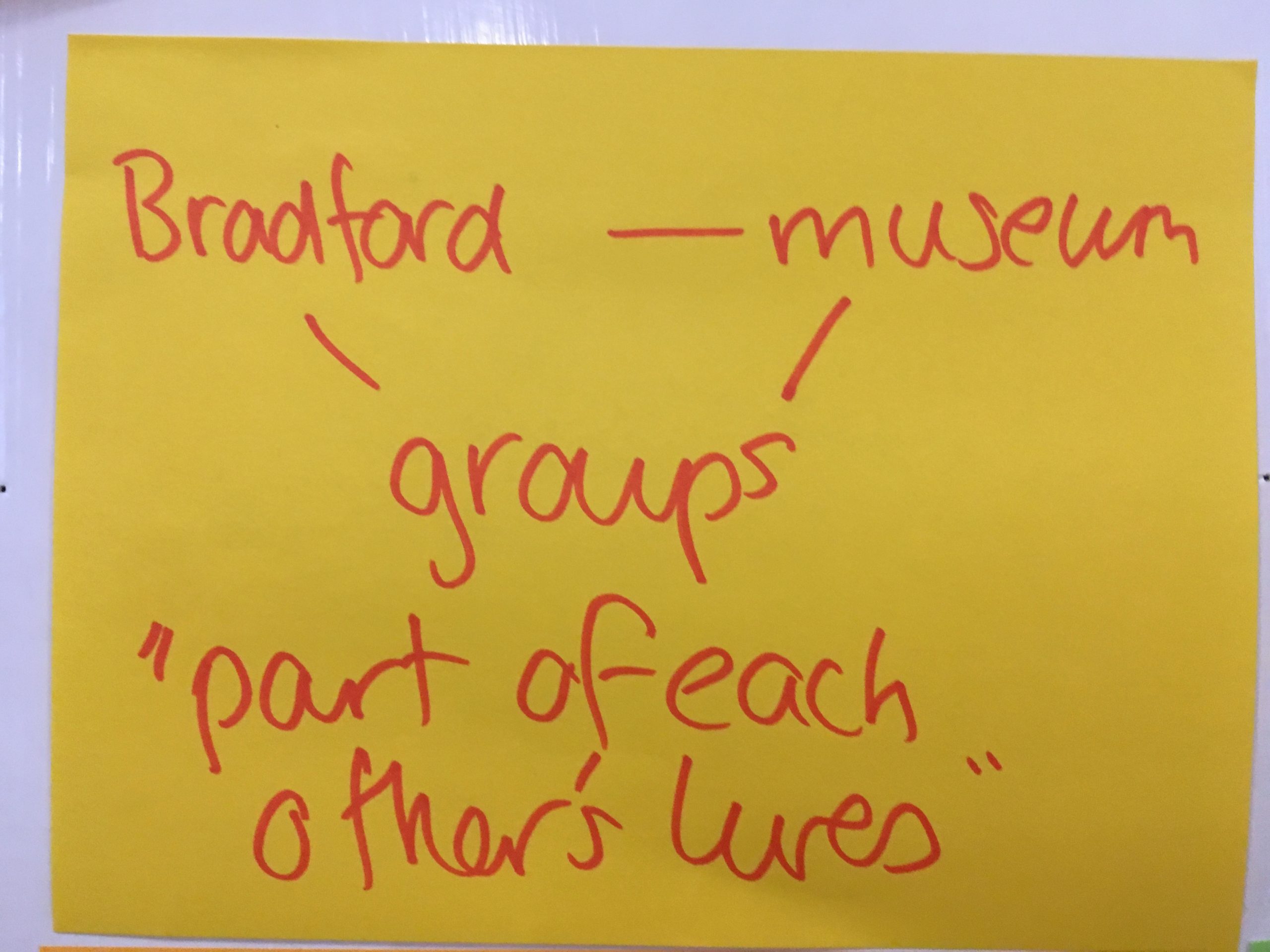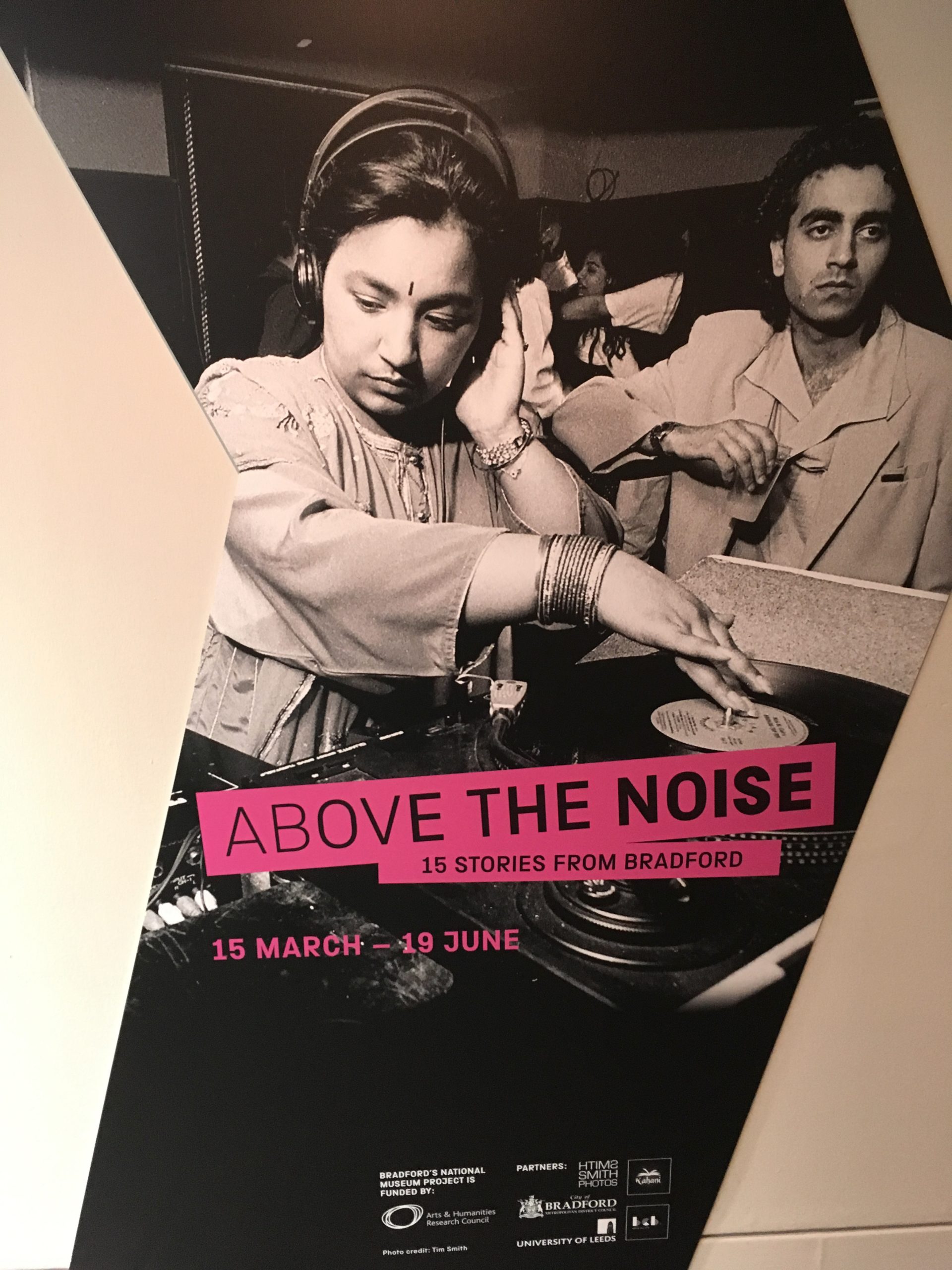Action Research
Bradford’s National Museum was an action research project. We explored questions by working together to try things out. We then reflected to make sense of what happened and what it might mean. We found the most powerful dynamics in our action research approach came from opening up issues with lots of different people and constantly testing arising ideas to see which started to resonate. Through this process of constant adjustment and calibration, ways forward for the research emerged.
Action research is a way of exploring questions through working together to try things out. Action research focuses on real life situations, as it is in everyday life that complex issues are produced and experienced. The National Science and Media Museum and Bradford are complex interconnected worlds shaped through everyday actions and relationships. The Bradford’s National Museum project approached the complexity of these interconnected worlds, through experimentation in active collaboration with those who are intrinsically part of the dynamic: people in the museum and people in Bradford.
The Bradford’s National Museum project used a particular form of action research called Systemic Action Research. Systemic Action Research was developed by Danny Burns as a means of linking systemic thinking and theories of complexity with action research in order to enable ‘holistic change in complex social and organizational settings’ (2007:1). Burns characterises Systemic Action Research as ‘a process through which communities and organisations can adapt and respond purposefully to their constantly changing environments’ through creating ‘participatory solutions to entrenched problems’ (2007:1).

A post-it note written by a member of museum staff when reflecting on Above the Noise: 15 Stories from Bradford and what they’d like to see next for the museum and Bradford. Image credit: Helen Graham
Burns frames Systemic Action Research as ‘a challenge to the rolling out of “best practice”, to “strategic planning”, and to models of linear causation that dominate our organisational and political landscape’ which fail ’because they are based on an assumption that intervention outcomes are relatively straightforward to predict, if only we could get the right sort of evidence’ (2007:1).
Action research of all kinds works with cycles of:
- Planning – developing initial questions and actions
- Acting – trying things out
- Observing – exploring what happened as a result
- Reflecting – sense making, which should be ‘cognitive, social and emotional’ (Burns 2007: 12)
Over the three years of this project we went through many different research cycles. Our first experiment was having Open Conversations to explore how people in Bradford see both Bradford and the museum. Insights from Open Conversations influenced our next research cycle, making the exhibition Above the Noise: 15 Stories from Bradford. After making the exhibition and the collaborative reflective process we developed – through the Staff Action Research Group – many parallel action research cycles, making sure they informed each other through cross-pollination.

Above the Noise: 15 Stories From Bradford poster guiding visitors towards the exhibition. Image credit: Helen Graham
To the usual cyclical action research approach Systemic Action Research adds an ‘improvisatory’ and ‘emergent’ approach to research and to change (2007: 41). Improvisation means trying to be responsive to what is happening, to where there is passion and energy and accepting offers to develop the research when they come up. Linked to responding to people’s interests and energies is the principle of ‘parallel development’, which warns against seeking false consensus and prompts a research design that enables people to diverge and to explore things they care about as part of their everyday life. Throughout the process of action research Burns advocates focusing on ‘resonance not representativeness’, that is watching for where people can ‘see’ and ‘feel’ the connection between things; looking for when they ‘know’ the emerging ideas are related to their experience and when they feel ‘energised’ and ‘motivated’ (2007: 53).
It is through this gathering of energy and resonance that directions for the research emerge and ideas and ways of thinking about the issues attract momentum and become more solid and stable. Making this publication was also an active part of this Systemic Action Research process. It was through the process of ideas arising, testing them with lots of different people and then adjusting the language, so it can slowly gather heft, that the Tensions as Strengths approach set out in Part 3: Future Directions emerged.
Reference:
Danny Burns (2007) Systemic Action Research: A Strategy for Whole System Change. Bristol: Policy Press.
Talking about action research cycles can make them sound neat and logical. If you speak to anybody who was involved, they will say the Bradford’ National Museum Project was often not that. And that was exactly how it should be. Working with hundreds of people and perspectives, with continuous conversation and exploring together, trialling things and seeing what emerges, we invite complexity, we invite uncertainty. Opening up the deep dynamics in relationships between people, between a whole district and a large organisation within it, opening up personal politics and worldviews, histories, feelings and more, is messy and can be uncomfortable. In this publication we write the story of our project in a linear and logical way. It could sound like everything went to plan. But it worked because while we had no plan, we did have a process. It worked because we stuck with our method of working, going where the energy is, sowing seeds and working with what emerges.
Julia Ankenbrand, Research Facilitator



